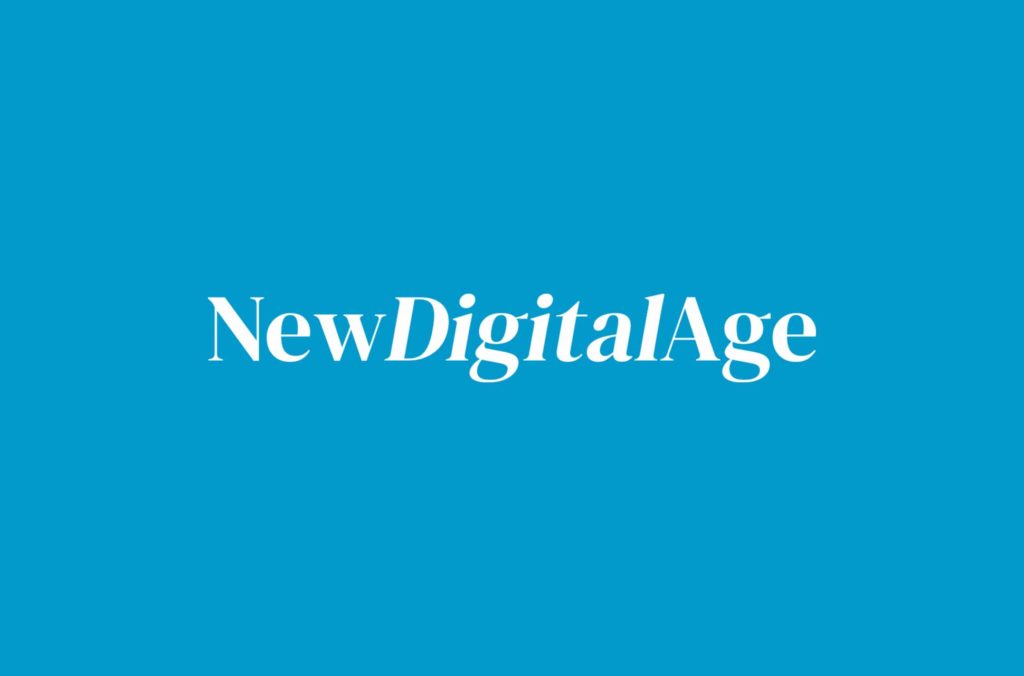UK marketing budgets grew at their strongest rate, since the second quarter of 2017, in Q3 2021. The ending of pandemic-related restrictions, success of the vaccine rollout, and impact of the furlough scheme all contributed to significant growth in both the UK’s marketing industry and overall economy.
We gathered comment from a collection of marketing experts, including Bluestripe Communications (owned by Bluestripe Group, owner of NDA) clients and other industry executives.
Dominic Woolfe, CEO UK, Azerion
“It’s great we’re seeing our industry make a positive recovery from the pandemic, with marketing budgets now at their strongest since 2017. However, the current supply chain and inflation issues make Q4 such a key event for many clients. Successful brands will be those who engage earlier with consumers in the lead up to Christmas and ensure they respond quickly to any changes.
“The Q3 IPA Bellwether report states that ad spend is set to grow sharply in 2021 and 2022. However, this will create an increasingly competitive market where advertisers must prioritise creativity and campaign effectiveness to deliver the brand performance that matters most.”
Nick Reid, Regional VP of Northern Europe, DoubleVerify
“It’s clear UK recovery across the industry has shifted up a gear with this quarter’s Bellwether Report revealing marketing budget growth is at its strongest in over four years. With video being the main driver in main media, up +12.6% from +4.2%, its crucial advertisers take this moment to ensure they put themselves in the best position to measure video’s attention by gaining timely, impression-level insights to optimise their campaign performance – from looking at the impact of an ad’s presentation to key dimensions of consumer engagement. With our recent Global Insights Report revealing just 15% of video ads are both audible and in-view on completion, advertisers are just scratching the surface.
“Only by using methods that quantify attention metrics like viewable time, share of screen, video presentation, audibility, and more, can brands pinpoint how much impact their ads are having. Armed with this insight campaigns can be refined, high-performing environments can be identified, and approaches optimised to secure consumer attention at scale.”
Lina Adelt, Head of Marketing, A Million Ads
“It’s brilliant to see that total marketing budgets have increased at the strongest rate since 2017 and businesses are looking to invest more in marketing activity. With video being the main driver for this increase, advertisers need to be mindful of what’s next for this growing medium.
“We know technology has accelerated during the pandemic, becoming faster and more advanced. Now is the chance for brands to embrace creativity and tech to build meaningful connections with consumers. And one way to do this is by utilising dynamic video ads.
“Dynamic video is an innovative solution that enables brands to tailor their messaging specifically to individual consumers, allowing them to adapt messaging to connect with them on a personal level. Brands can tap into contextual data points such as time of day, location and the weather to resonate with audiences and drive brand metrics. The result: better brand awareness, higher conversion rates and increased purchase intent.”
James Copley, CEO, Talon Outdoor
“It’s interesting to see that the Q3 IPA Bellwether report shows marketing spend in Out of Home (OOH) fell by -2.0% despite budgets increasing at the strongest rate since 2017, especially as recent Outsmart data shows UK OOH ad revenues are experiencing record growth, with the period from April to June growing 277% YOY.
“We are seeing very strong pre-covid level client demand throughout Q3 and into Q4 and expect this momentum to continue into 2022. Overall, it is clear that OOH has proven resilient and bounced back this year.”
Andrew Stephenson, Director of Marketing, EMEA, Treasure Data
“Strong growth in budgets, particularly in video and online, will see many marketers sigh in relief, as confidence regains momentum. But without effective customer data strategies in place, brands risk going into the Christmas period blind, regardless of their increasing budgets.
“For many brands, this is uncharted territory; having seen their customer data sets increase tenfold during the pandemic, as shoppers shifted online. Now they require robust marketing strategies that will unlock seamless online and offline experiences for customers, as they return to stores.
“The likes of Ikea, which is in talks to purchase Topshop’s former flagship in Central London, and HMV returning to the high street with live music in stores, highlights the emerging power of experiential.
“Brands that have the competitive edge this Christmas will put customer data at its core, and build out personal and tailored experiences fit for the new era of change.”
Karin Seymour, Client Strategy Director, News UK
“The latest IPA Bellwether report shows the impressive strides our industry is making as we move through Q4. Furthermore, it’s heartening to see that brands are investing more in main media ‘big ticket’ campaigns and with ad spend set to increase sharply in 2022, this will no doubt increase.
“But the past 18 months has shown us how consumers respond positively to human interest stories. So in a post pandemic era, brands should be looking at authentic and exciting ways to emotionally engage with their audiences, on a human level.”
Elizabeth Brennan, Head of Advertiser Strategy, Permutive
“Not only does the latest IPA Bellwether report show a recovering industry, but it also demonstrates the strongest growth in over four years, with company-level financial prospects at their most optimistic since Q1 2015.
“As a priority, advertisers need to test publishers’ first-party data this year as part of an established strategy to shift away from a reliance on third-party data, which is deprecating. By doing this, advertisers will have a sustainable and privacy-safe base to carry out business and plan marketing activity on.
“By forming direct relationships with publishers, advertisers can discover what their audiences are engaging with online. What’s more, with publishers’ first-party data, advertisers can understand their audiences’ shopping habits, interests, and trends without directly identifying the individual, which protects user privacy. These unique audience insights enable brands to plan and create effective and personalised campaigns at scale. Those operating without direct relationships and publishers’ knowledge may be left with a blind spot when communicating with consumers.”
Sarah Baumann, MD, VaynerMedia London
“It’s great to see such optimistic projections and this Bellwether reflects what we have been seeing with our clients’ increased commitment and focus on digital. Marketers are beginning to reap the rewards of digital full funnel marketing.
“However, not all is rosy, brands may want to spend – especially to make up sales in the run up to Christmas – but consumer experience is likely to be dampened by supply change and haulage issues while labour/staffing crises are affecting retail and hospitality. Put that against the backdrop of the climate crisis, Covid and Brexit – not to mention some pretty awful news stories – and consumer confidence is likely to remain quite shaky.”
Ryan Afshar, Head of Publishers UK, LiveRamp
“This level of ad spend recovery has been on the horizon since Covid-19 restrictions began loosening, confirming our prediction that budgets would be rejuvenated in the second half of 2021.
“In parallel with this increase in ad spend, brands who are testing addressable solutions rooted in people-based identity can expect to achieve enhanced business outcomes, particularly in comparison to device-based IDs. We now have a chance to build an ecosystem that puts privacy first and provides consumers with more transparency and control. In turn this delivers stronger revenue models for publishers and better ROAS for advertisers.
“The best way to put this into practice is by offering consumers a clear and fair value exchange. When consumers authenticate, they share their personal data in a transparent, privacy-first way in order to access content or experience. For example, this could be through logging in or signing up for a newsletter.
“Solutions that are based on authentications and people-based, privacy-first identity enable addressability throughout the ecosystem. This builds consumer trust, putting both the consumer and publisher in control whilst creating an environment where advertisers and publishers can work more closely together to deliver more meaningful outcomes for brands. A win, win for all.”
Mark Connolly, Managing Partner, Client Success, What’s Possible Group
“This Bellwether report highlights the strongest quarterly increase in marketing budgets since Q4 2017, which is extremely positive for advertisers and the economy. However, several short-term challenges remain that could severely impact budgets. One is that Covid restrictions could be reinstated during the winter months. This would impact consumers’ ability to shop in person during the crucial Christmas period – although online/DTC brands would continue to capitalise on this. So marketers need contingency plans for their budgets if this were to happen and we re-enter a period of lockdown. Also, the consumer confidence index dropped in Q3 which may impact spending. Marketing budgets may be needed to encourage spending.
“Another challenge could be global supply chain issues. The cost of sea shipping has increased exponentially this year, storage fees at UK ports are rising and the shortage of HGV drivers available to deliver stock to stores will affect sales in the coming months. This is the biggest threat to the retail sector – brands will have to pass these costs into consumers and, potentially, scale back marketing quickly if demand outstrips supply.
“Overall, this is a positive report, but there are several external market factors that could significantly impact the whole marketing economy.”
Nial Ferguson, Managing Director, UK & Ireland, Sourcepoint
“This is a really positive period for advertising, as budgets strengthen for the second quarter in a row. Despite this economic rebound, ongoing changes to global privacy regulations are having an increasingly significant impact on brands’ marketing investment. Enforcements continue to grab the headlines and a recent report suggests that UK consumers are more concerned about their online privacy in 2021 than they were in 2020, and this trend is forecast to continue. It’s clear therefore that brands and advertisers who overlook their privacy standards and those of the partners they work with and invest in, risk reputational damage and precarious customer loyalty.
“Advertisers who seek competitive advantage must also look beyond regulation and use this period of growth to embrace a meaningful pivot to privacy, where digital responsibility and data ethics deliver both performance and compliance benefits.”
Phil Duffield, VP UK, The Trade Desk
“It’s really encouraging that marketing budgets are continuing to rise again, with video and online leading the way, highlighting the critical role our industry can play in powering the economic recovery.
“Agility and precision have never been more important. When budgets were pinched and ROI was everything, marketers had to learn to make every decision count. Now spend is unlocking, we can’t expect to go back to rigidly planning ad spend months in advance. After all, we’ve witnessed first-hand how circumstances can change at the drop of a hat – and it’s those learnings that are here to stay.
“Consumers have resumed a sense of normalcy and in the run up to Christmas and they’ve got cash to spend – but marketers will need more than a healthy budget to win their attention. Ultimately, the brands who come out on top are the ones who embrace a data-driven approach to make smarter, more deliberate decisions on spend across all channels.”
Sally Laycock, CEO, Incubeta UK
“We’re heartened to see advertising budgets continue their upward trajectory into the remainder of 2021. The IPA Bellwether report marks a good opportunity for brands to approach the festive season with renewed focus.
“However, this Christmas period differs from those gone before, we’re seeing stock shortages and unpredictable footfall across the country and consumers have become accustomed to onmi-channel shopping environments. Marketers should run ongoing tests and learn to distinguish what is driving success, which channels they should invest in and which tactics they should execute. Ultimately, data is limited and retailers should approach the end of 2021 ready for a variety of different scenarios. This will ensure they are able to pivot quickly to changes that may crop up, such as a local lockdown or lack of stock.”
Justin Taylor, UK MD, Teads
“It’s been hugely positive to see UK marketing budgets continuing to increase in Q3. As workplaces, schools and entertainment have opened up again, this growth gives us a clear indication that all media is thankfully making a comeback as the world begins to return to normal.
“There was uncertainty at the start of 2021 as to whether new consumer habits would stick, but with Covid restrictions lifting, new research from Teads shows more than 2 in 5 consumers are intending to or will be increasing their online shopping levels. With this, alongside the overall economic uptick, advertisers are going to be eager to garner consumer’s attention online, especially in the lead up to the festive season.
“For advertisers, this quarter has been focussed on finding that balance of normality again and it is great to see the growth of marketing budgets as a result. There are clear headwinds going into Q4 with supply issues potentially impacting Christmas. But we’re seeing brands are responding proactively to these challenges and we’re bullish that 2021 will finish on a high.”
Matt Andrew, MD, Ekimetrics
“It’s clear that the loosening of restrictions is having a positive impact on both last quarter’s budgets and forecasts into next year and beyond. However, some brands are understandably cautious, with ‘lingering uncertainties’, especially as we head into Christmas with ongoing supply chain issues.
“The key to beating uncertainty is agility, which must be supported by timely, robust and reliable data to enable confident decisions about where to focus spend, both strategically and tactically. Without data, agility may simply be flip-flopping based on gut feel. All businesses take punts, using data is about making sure they’re the right ones.
“There are numerous ways data can support decision-making, from monitoring and forecasting macro and micro trends, to simulating multiple scenarios and employing both long- and short-term marketing measurement techniques. Developing a common framework for measurement and analysis means you can use multiple methods, such as econometrics, attribution and experimental analytics, in a shared context.
“In a highly competitive, changing and uncertain climate, it’s essential that brands are able to respond quickly to both challenges and opportunities. Putting data at the heart of marketing can take the heat out of uncertainty and avoid the traps of short-termism. It’s vital that brands understand the long-term drivers of revenue and margin, and not solely focus on campaign ROI, to avoid poorly-informed, snap decisions when circumstances change. The current challenges to supply chains and rising covid cases mustn’t detract from strategic brand building, or brands will suffer from a pattern of boom-and-bust investment.
“The burden of an annual plan must become a thing of the past. The last two years have tested marketers’ ability to respond quickly to changes. Brands must invest in forecasting, scenario planning and analytical frameworks to make sure they are better protected and more able to adjust as needed, whether that’s to the ongoing impact of hybrid working on OOH advertising, global market disparities, or the technological changes in digital advertising.”
Fergus Dyer-Smith, Founder & CEO, Wooshii
“With main media advertising being the best-performing marketing category in Q3, it should come as no surprise that video has been the main driver for this increase, going from 4.2% to 12.6%.
“Video has fast become the channel of choice for consumer marketers and businesses since the pandemic. The medium is now being used in a wide variety of ways from product demonstration in retail, to explaining the complexities of green energy and influencing people who are choosing a new car from the comfort of their own sofa.
“In a world where consumers are spending more and more time online, it’s imperative for brands to deliver content fast, repeatedly and consistently on a global scale. Video offers flexibility, scale, cost-effective engagement and standout results. And those videos that tell a story with authentic, original content will give brands a competitive edge.”
Louise Ainsworth, Executive Managing Director, EMEA, Kantar’s Media division
“There’s a real sense of businesses wanting to hit the ground running this quarter as the world comes out of hibernation after the long grind of Covid. This is reflected in increased marketing budgets and it’s heartening to see these uplifts in the latest IPA Bellwether report. Making that extra spend work hard and directing it to the right areas will be vital if firms want to achieve growth and make up any ground they’ve lost over the past 18 months. It’s a little disappointing therefore to see the drop off in investment in market research during this period. We know that 24.5 million adults believe the pandemic has changed their shopping habits for good, so it’s never been more important for marketers to use data and insight to guide their planning and help them understand how consumer behaviour is evolving.”
Matt White, VP EMEA Quantcast
“Despite this growth providing much-needed rejuvenation to the industry, it failed to reach the +17.4% initially forecasted for the 2021/22 financial year. The risk of collapsing consumer confidence, triggered by inflation and rising interest rates, and the potential reintroduction of Covid restrictions could mean that the end of the year looks very different to what we had imagined three months ago. The hope is that the advertising industry can play its part in maintaining consumer confidence and spending. If restrictions do kick in, digital advertising will once again take centre stage.”
David Mulrenan, Head of Investment, Zenith UK
“The whole industry will welcome the positive news coming out of the latest IPA Bellwether report. It backs up what we are seeing with media spend in the UK with Main Media Advertising driving the majority of the growth, with a positive change of 8.6% of companies reporting an upward revision of budgets in Q3.
“From an individual media perspective, we have seen OOH and cinema bounce back from a 2020 they will not want to remember. However, the big drivers for growth in 2021 has been TV and digital. TV, in particular has seen the advertiser confidence keep growing with revenue set to finish at circa 23% up year on year.
“It is comforting to see that so far the logistical issues with supply of products has not overtly affected advertisers Q4 budgets. However, the likely increases in both inflation and interest rates may well affect the outlook for Q1 2022.”










